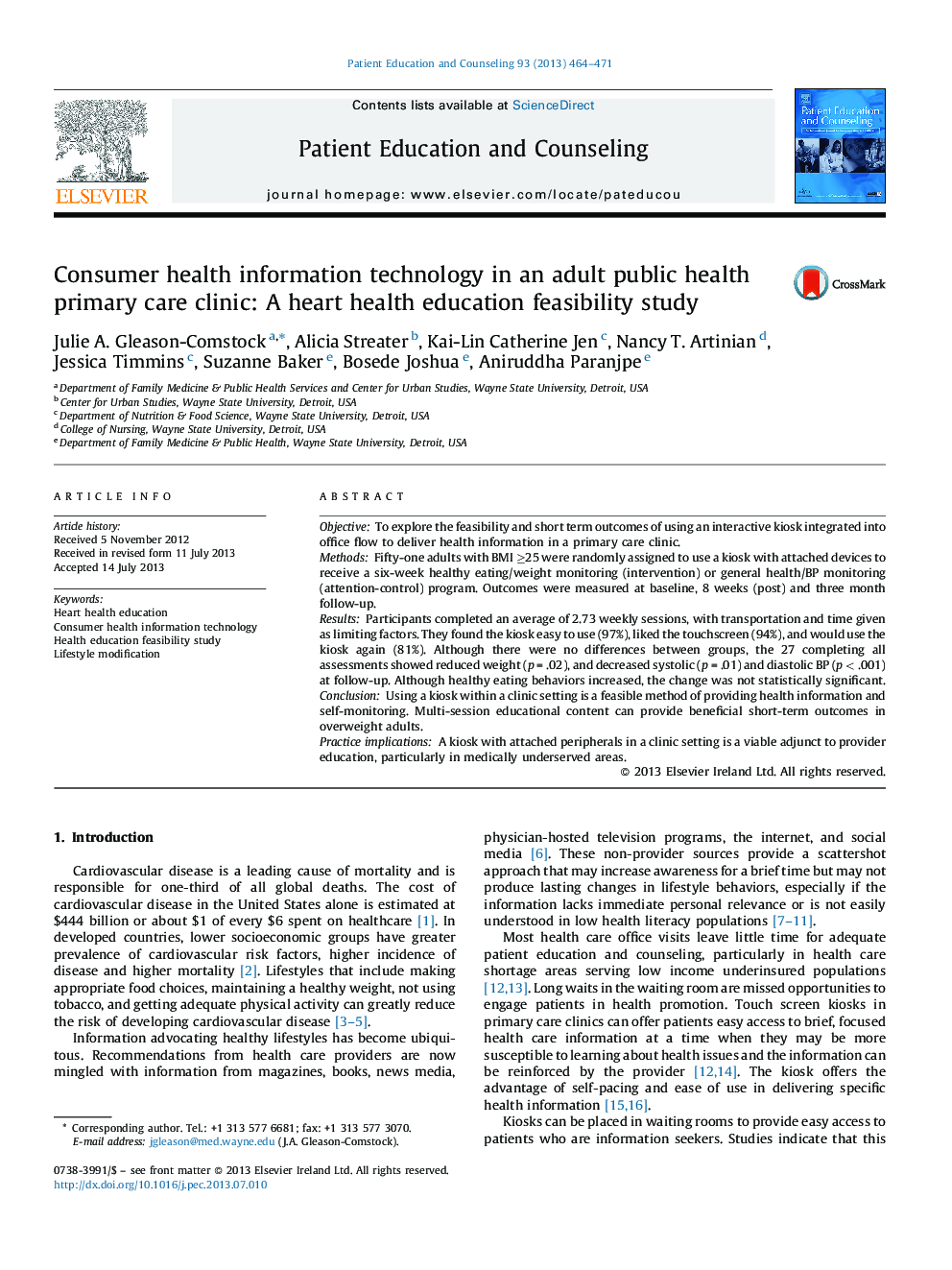| Article ID | Journal | Published Year | Pages | File Type |
|---|---|---|---|---|
| 6153079 | Patient Education and Counseling | 2013 | 8 Pages |
ObjectiveTo explore the feasibility and short term outcomes of using an interactive kiosk integrated into office flow to deliver health information in a primary care clinic.MethodsFifty-one adults with BMI â¥25 were randomly assigned to use a kiosk with attached devices to receive a six-week healthy eating/weight monitoring (intervention) or general health/BP monitoring (attention-control) program. Outcomes were measured at baseline, 8 weeks (post) and three month follow-up.ResultsParticipants completed an average of 2.73 weekly sessions, with transportation and time given as limiting factors. They found the kiosk easy to use (97%), liked the touchscreen (94%), and would use the kiosk again (81%). Although there were no differences between groups, the 27 completing all assessments showed reduced weight (p = .02), and decreased systolic (p = .01) and diastolic BP (p < .001) at follow-up. Although healthy eating behaviors increased, the change was not statistically significant.ConclusionUsing a kiosk within a clinic setting is a feasible method of providing health information and self-monitoring. Multi-session educational content can provide beneficial short-term outcomes in overweight adults.Practice implicationsA kiosk with attached peripherals in a clinic setting is a viable adjunct to provider education, particularly in medically underserved areas.
